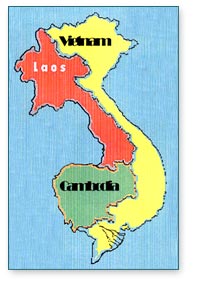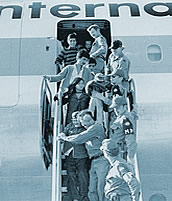 Since 1975 more than 1.2 million Southeast Asians have left their homelands and arrived in the United States. Before this there had been few Southeast Asians in this country, principally military personnel, international students, and war brides or international brides. Although they were small in number, those living in the United States before 1975 helped to sponsor and support relatives and friends who would later arrive as refugees. Southeast Asians are dispersed throughout the world, but the largest communities of refugees and immigrants have resettled in the United States, reflecting the legacies of U.S. political intervention and the significance of diasporic networks. Since 1975 more than 1.2 million Southeast Asians have left their homelands and arrived in the United States. Before this there had been few Southeast Asians in this country, principally military personnel, international students, and war brides or international brides. Although they were small in number, those living in the United States before 1975 helped to sponsor and support relatives and friends who would later arrive as refugees. Southeast Asians are dispersed throughout the world, but the largest communities of refugees and immigrants have resettled in the United States, reflecting the legacies of U.S. political intervention and the significance of diasporic networks.
Waves of Departure
Refugees and immigrants from Cambodia, Laos, and Vietnam did not arrive all at once in this country, but in various stages, often referred to as waves. A small number, mainly members of the elite class, recognized the impending danger and were able to immigrate before 1975. The majority of refugees and immigrant began to arrive in 1975, continuing until the late 1990s.
Evacuation to the United States
The U.S. State Department planned emergency evacuations by air and sea for their allies during the last days of the war. South Vietnamese and Cambodian military personnel, civilian employees for the U.S. government, and nongovernmental organization employees fled because they feared reprisals by the new regime. Others feared communist persecution because of their religious beliefs, including many Catholics, who had originally migrated to the South from North Vietnam in 1954. In Operation Frequent Wind, these select groups of evacuees, along with others who managed to be included, were transported to processing centers at U.S. military bases in Guam , Wake Island , or the Philippines . They were then placed in four temporary camps at U.S. military bases in Camp Pendleton , California ; Fort Chaffee , Arkansas ; Eglin Air Force Base, Florida ; and Fort Indiantown Gap, Pennsylvania.
Continued on page 2 |
<< Back |
[1] 2 |
Next >> |
|


 Since 1975 more than 1.2 million Southeast Asians have left their homelands and arrived in the United States. Before this there had been few Southeast Asians in this country, principally military personnel, international students, and war brides or international brides. Although they were small in number, those living in the United States before 1975 helped to sponsor and support relatives and friends who would later arrive as refugees. Southeast Asians are dispersed throughout the world, but the largest communities of refugees and immigrants have resettled in the United States, reflecting the legacies of U.S. political intervention and the significance of diasporic networks.
Since 1975 more than 1.2 million Southeast Asians have left their homelands and arrived in the United States. Before this there had been few Southeast Asians in this country, principally military personnel, international students, and war brides or international brides. Although they were small in number, those living in the United States before 1975 helped to sponsor and support relatives and friends who would later arrive as refugees. Southeast Asians are dispersed throughout the world, but the largest communities of refugees and immigrants have resettled in the United States, reflecting the legacies of U.S. political intervention and the significance of diasporic networks.